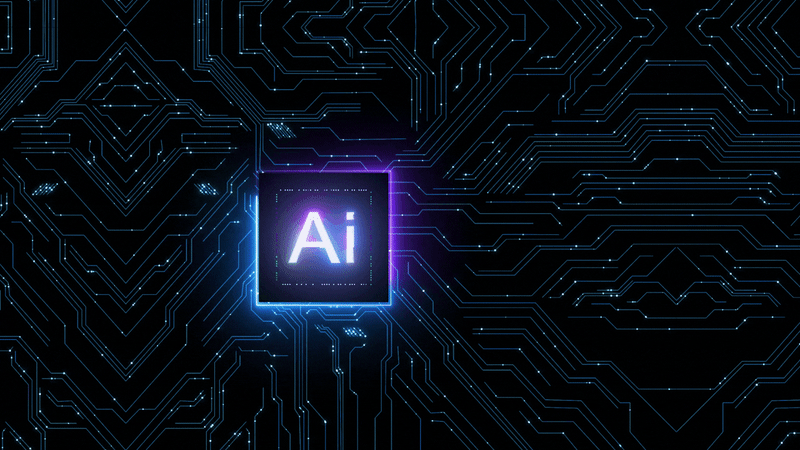Introduction
As cyber threats become more sophisticated, organizations need advanced security solutions to protect their systems and data. Artificial intelligence (AI) is transforming cybersecurity by enabling next-generation threat detection, prevention, and response capabilities. In this blog post, we will examine what AI-powered cybersecurity is, why it is important, how AI is applied in security solutions, and the future of AI in cyber defense.
What is AI?
AI refers to computer systems that are able to perform tasks that normally require human intelligence, such as visual perception, speech recognition, and decision-making. AI applications are powered by machine learning algorithms that can learn from data and improve their performance over time without explicit programming. AI allows systems to adapt to new inputs and scenarios.
What is Cybersecurity?
Cybersecurity involves protecting computer systems, networks, programs, and data from unauthorized access or attacks. The main goals of cybersecurity are to ensure confidentiality, integrity, and availability of information systems. Effective cybersecurity detects and prevents cyber threats while also having controls in place to minimize damage from security incidents.
What is AI-powered cybersecurity?
AI-powered cybersecurity utilizes AI technologies like machine learning and natural language processing to enhance traditional cybersecurity defenses. AI enables security solutions to analyze huge volumes of data from networks, endpoints, cloud environments and other sources to identify advanced threats and respond to them rapidly. AI systems can learn from past cyber events to strengthen future attack prevention.
Why is AI-powered cybersecurity important?
Traditional cybersecurity tools rely heavily on rules and signatures to detect known patterns of attacks. However, they lack the sophistication to identify new attack methods or threats that deviate from known behaviors. AI systems can find anomalies and recognize new patterns rapidly from massive sets of data. This allows earlier detection of zero-day exploits, insider threats, and other emerging attacks.
AI automation also augments human security teams and helps address the cybersecurity skills shortage. With the rising number of sophisticated attacks and expanded digital infrastructure, AI is essential for keeping pace with today's threat landscape.
Benefits of AI-powered cybersecurity:
-
Proactive threat detection and prevention
AI analyzes user activities, network traffic, and system logs to identify behavioral anomalies indicative of insider risks or external attacks. By flagging early warning signs, AI solutions can preempt threats before they cause damage.
-
Automated incident response
AI systems can automatically perform containment, eradication and recovery tasks to rapidly respond to security incidents. This allows faster neutralization of threats and lower damage costs.
-
Improved threat intelligence
AI uses big data analytics on threat data to derive real-time insights on emerging risks. This enhances situational awareness so that defenses can be adapted dynamically based on the latest attack trends.
-
Reduced human error
AI reduces delays and errors by automating tedious and complex security tasks. With AI handling the legwork, human analysts can focus on higher-value threat investigations and response duties.
-
Increased scalability and efficiency
AI-driven cybersecurity strengthens defenses while lowering costs through automation. Highly scalable AI systems enable streamlined protection across hybrid cloud infrastructures and distributed networks.
How AI is used in cybersecurity
Here are some of the major applications of AI for cyber defense:
Intrusion detection and prevention systems (IDPS)
Intrusion Detection and Prevention Systems (IDPS) are essential cybersecurity tools designed to safeguard computer networks from unauthorized access and malicious activities. These systems continuously monitor network traffic and system behavior, actively searching for signs of intrusion, such as suspicious patterns, malware, or abnormal user behavior.
IDPS serves a dual purpose: detection and prevention. Detection involves identifying potential threats and alerting security teams to investigate further. Prevention, on the other hand, takes immediate action to block or mitigate threats in real-time. IDPS play a critical role in maintaining the integrity and security of digital assets, helping organizations proactively defend against cyber threats and minimize the potential for data breaches and network compromise.
User and entity behavior analytics (UEBA)
User and Entity Behavior Analytics (UEBA) is a sophisticated cybersecurity methodology that deploys machine learning and artificial intelligence algorithms to scrutinize and comprehend user and entity activities within a network. UEBA establishes a baseline of typical behavior patterns, then continuously monitors for deviations or anomalies. It takes into account a myriad of parameters, such as login times, data access, application usage, and more, to detect potentially malicious or unauthorized activities. By identifying outliers, UEBA assists in the early recognition of insider threats, compromised accounts, or abnormal system actions, enabling rapid response and fortification of network security against evolving cyber threats.
Security information and event management (SIEM) systems
Security Information and Event Management (SIEM) systems are intricate cybersecurity platforms designed for comprehensive threat detection and incident response. They aggregate and normalize data from a wide array of sources, including firewalls, intrusion detection systems, and servers, to provide a holistic view of an organization's security landscape. SIEM employs rule-based and machine learning algorithms to analyze this data, identifying patterns and anomalies that may indicate security incidents. It correlates disparate events to generate real-time alerts, allowing security teams to respond swiftly. Additionally, SIEM systems aid in compliance adherence by offering in-depth reporting and forensic analysis. Their technical prowess makes SIEM a linchpin in modern security operations.
Endpoint security
Endpoint security, in the technical realm of cybersecurity, encompasses a suite of tools and practices designed to fortify individual devices (endpoints) within a network. These tools include antivirus software, host-based firewalls, intrusion detection and prevention systems, and encryption mechanisms. Endpoint security aims to prevent, detect, and respond to a spectrum of threats, from malware and ransomware to insider attacks. It employs heuristics, behavioral analysis, and signature-based detection to identify and mitigate risks. With the increasing prevalence of remote work and mobile devices, robust endpoint security is crucial in maintaining data confidentiality and safeguarding against advanced threats, forming a fundamental pillar of modern cybersecurity architecture.
Vulnerability management
Vulnerability management utilizes specialized SAST (static application security testing) and DAST (dynamic application security testing) tools to continuously monitor applications and infrastructure for security misconfigurations or coding flaws. These scans identify vulnerabilities like SQL injections, cross-site scripting, insecure APIs, and unpatched systems. Once found, vulnerabilities are rated using CVSS (Common Vulnerability Scoring System) risk scores to prioritize remediation. Organizations create plans to patch or mitigate the most critical risks first. Automated patch management solutions can deploy fixes across systems. Vulnerability assessment reports track remediation progress. Effective vulnerability management combines asset inventory, risk analysis, threat modeling, penetration testing, and security instrumentation to find and fix security gaps before exploitation.
Threat hunting
Threat hunting leverages endpoint detection and response tools, SIEMs, and threat intelligence feeds to actively identify IOCs and TTPs of advanced adversaries. Skilled hunters create statistical baseline models of network traffic and asset behaviors, enabled by machine learning algorithms. By applying behavioral analytics, hunters can flag anomalies indicative of lateral movement, command and control communications, privilege escalation, and exfiltration. Expert threat hunters deeply investigate outliers, pivoting through related observables to rapidly uncover the scope of any active intrusions. Technical threat hunting provides proactive mitigation by continuously monitoring for stealthy, persistent threats that bypass traditional perimeter defenses. Robust threat hunting teams are a critical capability for organizations to validate security controls and expose gaps exploited by sophisticated actors.
Incident response
Robust incident response relies on integrating threat intelligence feeds, endpoint detection, and centralized log analysis. Security orchestration playbooks automate containment of compromised hosts by isolating VLANs, disabling user accounts, and blocking IOCs. Forensics utilize endpoint and network forensics tools to uncover attack chains, identify patient zero, and determine data exfiltrated. Reverse engineering of malware executables provides IOCs to scan for additional infections. Post-mortems extract key learnings to improve tooling, monitoring, and staff response flows. Tabletop exercises test and refine IR methodologies. SecOps metrics quantify dwell time, time-to-resolution, and costs. Continual enhancement of detection, integration, automation, and cyber resilience prepares teams to efficiently triage, investigate, and remediate advanced persistent threats.
Future of AI-powered cybersecurity
Here are some innovations expected in the future of AI-driven cybersecurity:
Autonomous security systems
AI agents will work autonomously to hunt threats, patch systems, isolate compromised devices and perform other tasks without human intervention. This will enable near real-time cyber risk reduction.
Predictive threat intelligence
Using predictive data analytics, AI systems will forecast new attack types, sources, and targets based on emerging actor behaviors, capability developments and anticipated vulnerabilities.
Advanced threat hunting
Next-gen AI will perform proactive threat searches through massive internal and external data sets to identify stealthy risks before they materialize. AI will also link threat indicators across systems and networks.
AI-driven incident response and forensics
Future AI will instantly enact response playbooks tailored to attack characteristics, investigate incidents thoroughly to establish root causes and quantify business impact.
Automated compliance and governance
AI will continuously validate technology and business processes against regulatory policies, corporate standards, and contract terms. AI will provide recommendations to improve cyber risk posture.
Conclusion
The continuously evolving threat landscape requires next-gen cybersecurity powered by AI to outsmart sophisticated attackers. AI enables intelligent automation of tasks, empowering security teams to focus on critical challenges. With capabilities like proactive threat discovery, rapid anomaly detection, and accelerated response, AI systems are indispensable for robust cyber resilience.
To begin leveraging AI for cybersecurity, focus on high-risk areas like cloud workloads, remote endpoints or privileged accounts. Consider AI-enabled solutions like UEBA, SIEM and anti-malware that integrate with existing tools. Develop in-house AI expertise and continue enhancing AI capabilities over time to maximize cyber protection. With AI technologies rapidly evolving, the future is bright for AI-driven cyber defense.












Top comments (0)